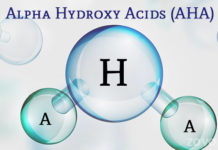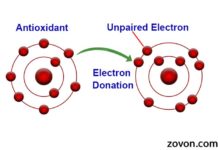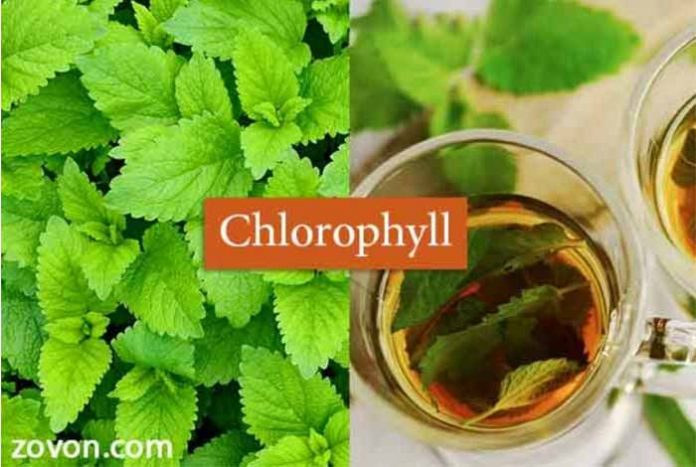
Chlorophyll is a green photosynthetic pigment synthesized by plants, cyanobacteria and chloroplast of algae. It is responsible for the green color of plants. The green color is caused by the absorption of blue and red wavelengths of light. Because of the light absorbing nature of its pigments, it is also called a photoreceptor.
Chlorophyll has antioxidant properties and is a good source of Vitamin A, C, E and K. It has various therapeutic properties. The supplemental form of chlorophyll is referred as Chlorophyllin which contains magnesium instead of copper.
Structure and types of Chlorophyll:
The chemical formula of chlorophyll is C55H72O5N4Mg. However, the number of atoms of various molecules vary with the types of chlorophyll. There are two major types of chlorophyll found in plants, i.e. Chlorophyll A and Chlorophyll B. Chlorophyll is a chlorine pigment and the magnesium ion(Mg2+) is present in the center of the chlorin ring.
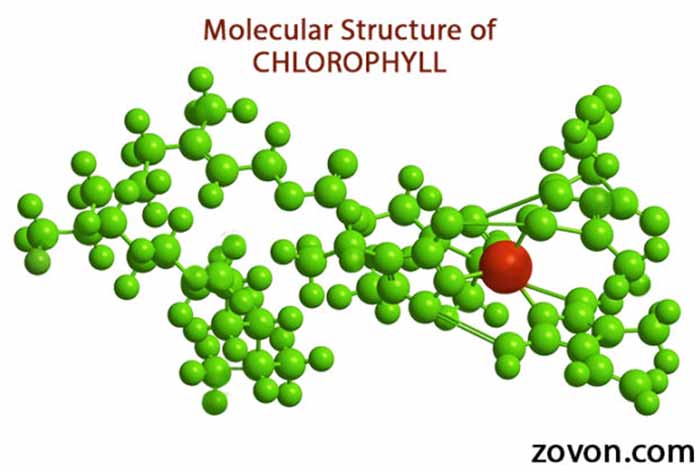
Sources of Chlorophyll:
Natural Chlorophyll is generally found in green plants such as,
- Asparagus
- Beet greens
- Green bell
- Peppers
- Broccoli
- Brussels sprouts
- Green cabbage
- Celery
- Cucumbers
- Green peas
- Mustard greens
- Green olives
- Spinach
- Turnip greens
- Herbs and spices
- Raw pistachio nuts
- Wheat
- Barley
- Green grapes and Kiwi
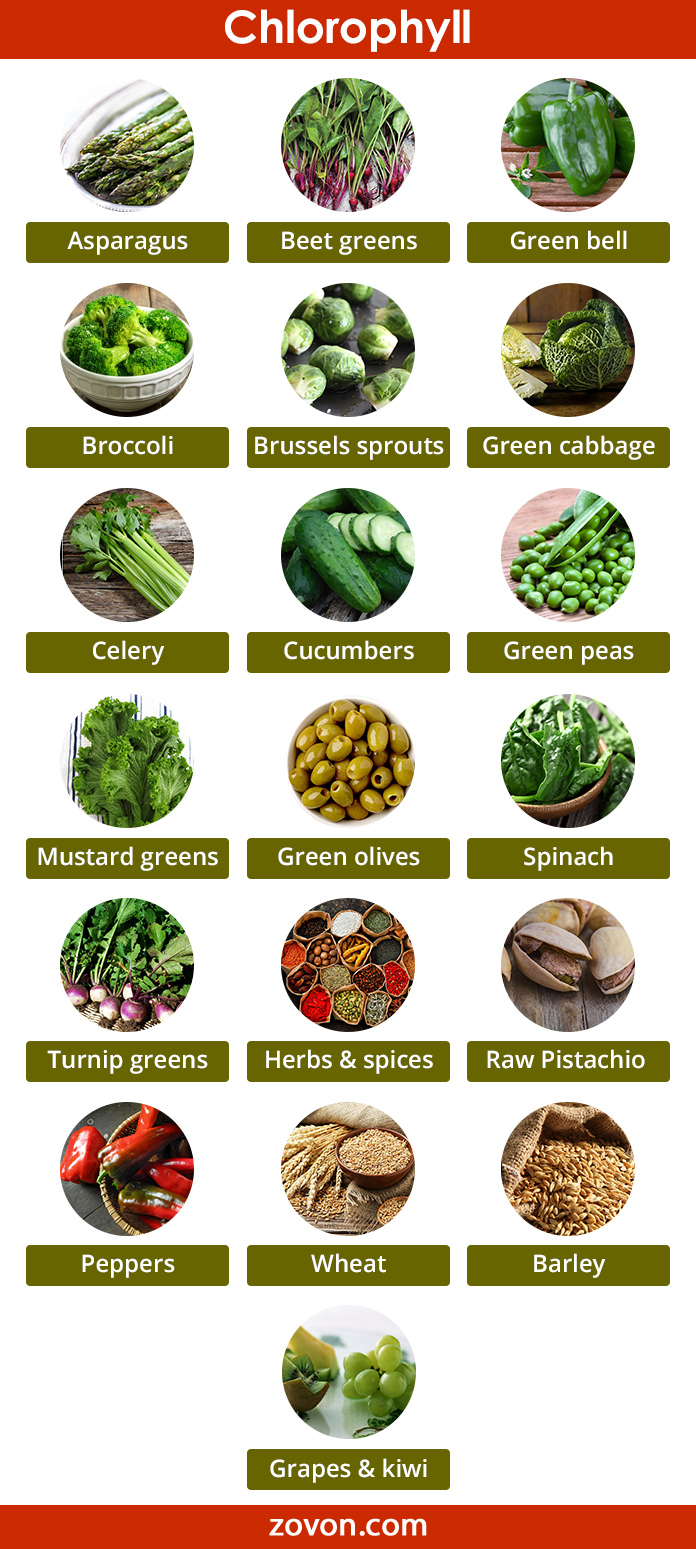
However, it can also be consumed in the form of chlorophyll supplements that are available commercially.
Uses of Chlorophyll:
Chlorophyll is majorly used by plants for their growth and helps the plants to prepare their food by means of sunlight. However, chlorophyll has wide application in humans too.
Skin Care:
- Chlorophyll is a strong antioxidant and thus helps in protecting the skin from the reactions of free radicals by oxidizing them. It helps in protecting the skin from visible signs of aging such as wrinkles and helps in making your skin look younger and healthier.
- Chlorophyll resembles the structure of Hemoglobin which is the main constituent of human blood. It functions to improve the flow of oxygen in the blood and improves the quality of skin and makes your skin glow and shine.
- Chlorophyll is useful to fight other skin problems like eczema, skin inflammation, psoriasis and dermatitis.
Chlorophyll and Health Care:
- Chlorophyll helps in detoxification of the liver and helps in the waste removal from the body and thus helps in protection from constipation.
- When chlorophyll is consumed in the form of thylakoid supplement or along with high carbohydrate foods, it gives a sensation of fullness and helps in maintaining a balanced appetite and in weight loss.
- It helps in the quick recovery of wounds and ulcers.
- It helps in removal of fungus from body and getting rid of bad odors from body.
Side-effects & Precautions:
The natural chlorophyll is generally non-toxic in nature but sometimes if not taken properly, can cause various problems.
- It can result in digestive problems such as diarrhea.
- Topical application may cause itching and burning.
However, chlorophyll can be consumed in the form of supplements but even in case of supplements, a limited dosage of chlorophyll should be maintained i.e. 100-300mg per day that too in divided doses.
Limited dosages of chlorophyll can help in reducing the side effects and provide better skin and health care.
Products:
Commercial chlorophyll is available in the market in various forms such as tablets, liquids, ointments and sprays.
- Holland & Barrett is a well-known brand that makes chlorophyll tablets
- K-Liquid and Desouza’s are famous for making Liquid Chlorophyll.
FAQs: What people normally want to know about Chlorophyll?
1. Is it okay for pregnant women to consume chlorophyll supplements?
There are no proper guidelines for pregnant women to use chlorophyll supplement. However, the advice of a physician is recommended if you are willing to consume chlorophyll supplements.
2. I consume the recommended amount of chlorophyll powder i.e. 300mg every night, I’m still having digestive issues, is it because of chlorophyll?
Yes, probably the reason behind these problems is that you consume the whole amount at a time. You should try dividing the total amount by 2 or 3 doses. It might help you.
3. I’m a non-vegetarian. Is there any non-vegetarian thing that can provide me enough amount of natural chlorophyll?
No, chlorophyll is present in plant products only. There is no non-vegetarian source that can provide you with chlorophyll.

